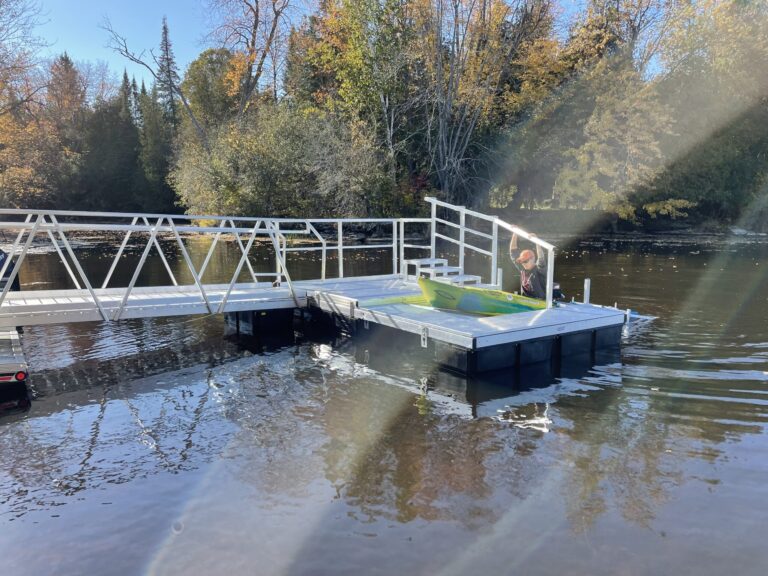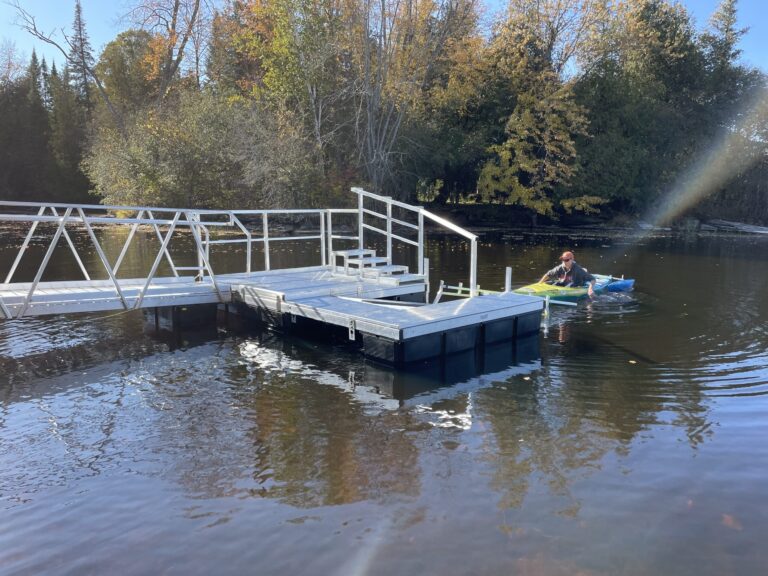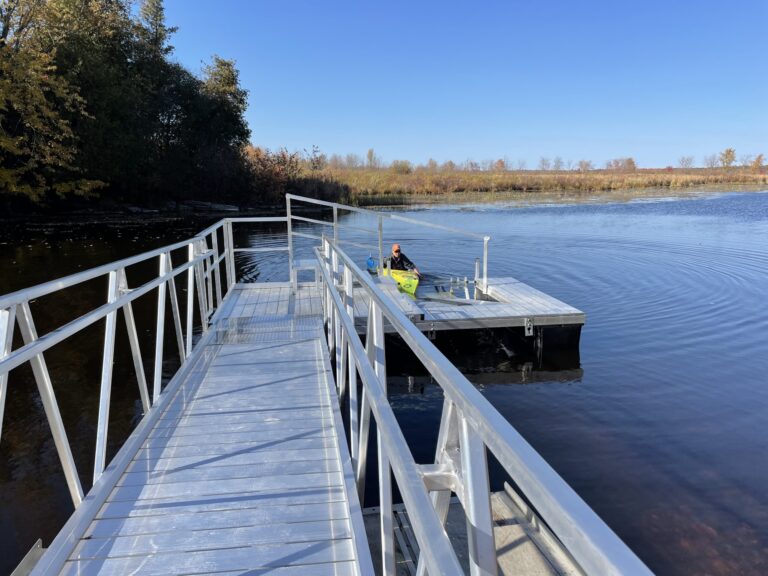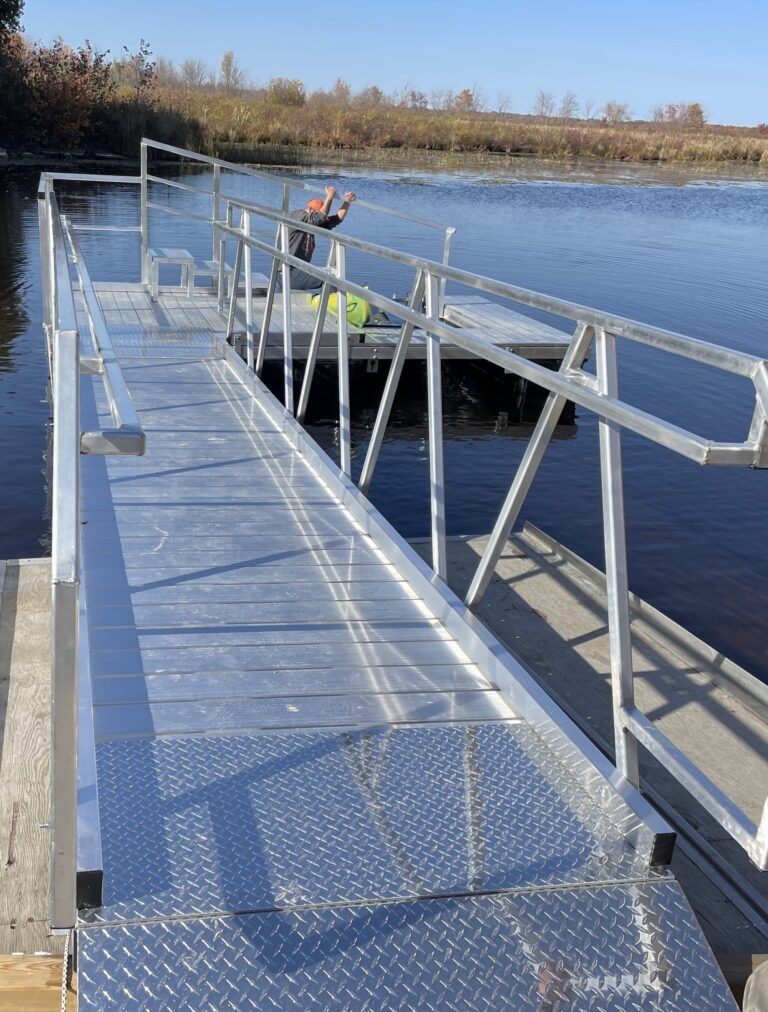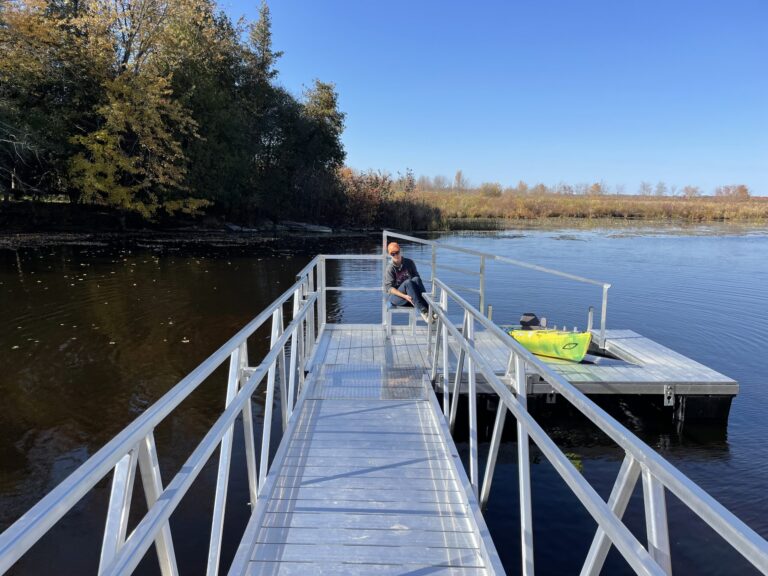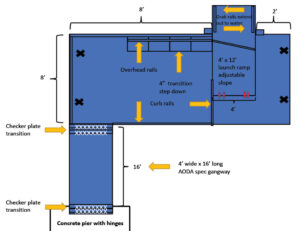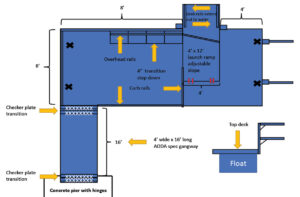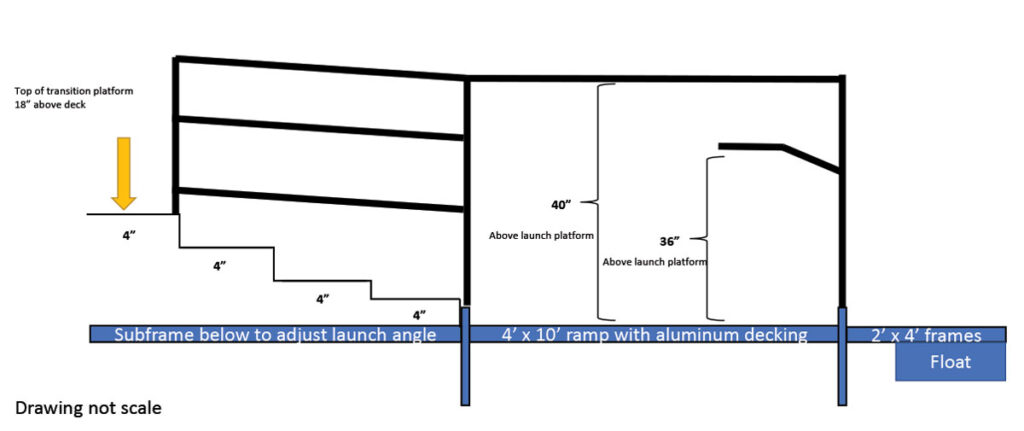Seven Design Features of an AODA Accessible Kayak/Canoe Launch
- Gangway slope: If a ramp drops down to the launch site, it needs to have a modest slope to meet ADA guidelines. The ramp should have 1 foot of length for every inch it drops. Water levels often fluctuate, and gangways allow the system to accommodate the water level change.
- Handrails: To assist users, handrails down the gangway need to be 36 inches high.
- Ample room: The deck of the launch site should be big enough to accommodate wheelchairs, watercraft, and other equipment.
- Step-down bench: In the middle of the floating launch structure is a bench with transition steps so users can work their way down to the kayak. The transfer bench is often made out of aluminum, which allows the user to slide along each step. Each step is a small drop down.
- At the end of the bench, an overhead rail over the top of the kayak to provide additional support and allow the user to ease straight down into the kayak.
- Moving the vessel: Launch decks are made of aluminum decking materials for low maintenance and scratch resistance. In the loading area, the kayak or canoe is supported by slide guides that hold the vessel steady while the user is getting situated into the vessel.
- More handrails: Additional handrails on the ramp allow users to work their way down the launch to open water.


